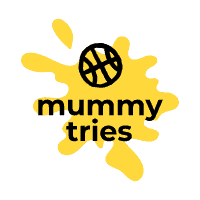Toddler shaking when excited is a common behavior that many parents observe in their children. It can be a cause for concern, especially if it is accompanied by other symptoms or if it persists over time. However, in most cases, it is a normal behavior that does not require any medical intervention.

Key Takeaways
- Toddler shaking when excited is a normal behavior that indicates their emotional state and their level of engagement with their environment.
- Some of the common causes of shaking in toddlers include adrenaline rush, primary motor stereotypies, and developmental disorders.
- In most cases, toddler shaking when excited does not require any medical intervention, but parents should consult a pediatrician if they observe any other symptoms or if the behavior persists over time.
Understanding Toddler Shakes and Excitement
Toddler shaking when excited is a common occurrence that many parents experience. It is a physical manifestation of the child’s excitement, joy, or anticipation, and it can be a normal behavior. However, some parents may be concerned about their child’s shaking, and they may wonder if it is a sign of an underlying medical condition. This section will provide an overview of toddler shakes and excitement and help parents differentiate between normal and concerning shakes.
Differentiating Between Normal and Concerning Shakes
Toddler shaking can be normal or concerning, depending on the frequency, intensity, and duration of the shakes. Normal shakes are usually mild and brief, and they occur when the child is excited, happy, or anticipating something. They may be accompanied by laughter, smiling, or clapping, and they do not interfere with the child’s activities or daily routines. Concerning shakes, on the other hand, are usually severe, prolonged, and disruptive, and they may be a sign of an underlying medical condition. They may be accompanied by other symptoms, such as fever, lethargy, poor appetite, or developmental delays.
The Role of the Nervous System in Excitement
The nervous system plays a crucial role in toddler shakes and excitement. The Moro reflex, also known as the startle reflex, is a primitive reflex that is present in infants and young children. It is triggered by sudden movements or loud noises and causes the child to extend their arms, legs, and fingers and then bring them back to their body. The Moro reflex is a normal response to stimuli and helps the child cope with the environment. However, it can also cause shaking when the child is excited or startled.
Another factor that contributes to toddler shakes and excitement is adrenaline. Adrenaline is a hormone that is released by the body in response to stress or excitement. It increases the heart rate, blood pressure, and respiration, and prepares the body for fight or flight. Adrenaline can cause shaking, trembling, or tremors, especially in young children, whose nervous system is still developing.
In conclusion, toddler shakes and excitement are a normal part of a child’s development and should not cause concern in most cases. However, parents should be aware of the signs of concerning shakes and seek medical advice if necessary. The nervous system and adrenaline play a crucial role in toddler shakes and excitement, and parents can help their child cope with these experiences by providing a safe and nurturing environment.
Common Causes of Shakes in Toddlers
Toddlers can exhibit various types of involuntary movements and reflexes, some of which can be concerning for parents. However, most of these movements are normal and can be attributed to the development of the nervous system. In this section, we will discuss some of the common causes of shakes in toddlers.
Involuntary Movements and Reflexes
Toddlers may exhibit various types of involuntary movements and reflexes, such as tremors, tics, and jerks. These movements are usually normal and are a result of the developing nervous system. Some of the common involuntary movements seen in toddlers include head nodding, eye blinking, and lip smacking.
Emotional Triggers and Anxiety
Emotional triggers and anxiety can also cause shakes in toddlers. According to mommycooz.com, toddlers may clench their fists and shake when excited, anxious, or anticipating something. This is a normal response to intense emotions, and parents should not be alarmed.
Medical Conditions and Genetics
In some cases, shakes in toddlers can be a sign of an underlying medical condition or genetic disorder. For example, familial tremor is a type of essential tremor that affects more than one family member and is thought to be caused by a genetic risk factor. Additionally, some developmental disabilities, such as autism and obsessive-compulsive disorder, can cause involuntary movements and tremors.
Overall, most shakes in toddlers are normal and are a result of the developing nervous system. However, if parents are concerned about their child’s movements or if the movements are interfering with their daily activities, they should consult a healthcare provider.
Identifying and Diagnosing Shaking Behaviors
Shaking behaviors in toddlers can be normal and a sign of excitement. However, in some cases, shaking behaviors can be a sign of an underlying medical condition. Identifying and diagnosing shaking behaviors in toddlers is important to ensure they receive appropriate care and treatment if necessary.
When to Visit a Pediatrician
If a toddler’s shaking behavior is accompanied by other symptoms such as fever, vomiting, or lethargy, it is important to visit a pediatrician or healthcare provider. In some cases, shaking behaviors can be a sign of a seizure or other medical condition that requires medical attention.
Assessment and Diagnosis Process
If a toddler’s shaking behavior is not accompanied by other symptoms, a pediatrician or healthcare provider may conduct a physical exam and blood tests to rule out any underlying medical conditions. If necessary, they may refer the toddler to a pediatric neurologist for further evaluation.
A pediatric neurologist may conduct an electroencephalogram (EEG) to assess the toddler’s brain activity and diagnose any seizure disorders or other neurological conditions that may be causing the shaking behavior.
It is important to note that not all shaking behaviors in toddlers are indicative of a medical condition. Some toddlers may shake when excited or experiencing intense emotions. However, if a toddler’s shaking behavior is persistent or accompanied by other symptoms, it is important to seek medical attention to ensure they receive appropriate care and treatment.
Treatment and Management of Toddler Shakes
When it comes to treating and managing toddler shakes, there are a few different approaches that can be taken. The best course of action will depend on the underlying cause of the shaking, as well as the severity of the symptoms.
Addressing Underlying Health Issues
If the shaking is being caused by an underlying health issue, such as a seizure disorder or developmental delay, it is important to address that issue first and foremost. This may involve working with a team of healthcare providers to develop a treatment plan that includes medication, therapy, or other interventions.
In some cases, addressing the underlying health issue may be enough to reduce or eliminate the shaking altogether. However, it is important to note that not all health issues can be cured or treated, and some may require ongoing management and support.
Behavioral Interventions and Support
In cases where the shaking is not being caused by an underlying health issue, behavioral interventions and support may be helpful. This may involve working with a therapist or other healthcare provider to develop strategies for managing the shaking and reducing its impact on the child’s daily life.
Some possible strategies may include:
- Providing a calming environment: Creating a calm and soothing environment can help reduce anxiety and stress, which may be contributing to the shaking.
- Encouraging relaxation techniques: Teaching the child relaxation techniques, such as deep breathing or visualization, can help them learn to manage their anxiety and reduce the frequency and severity of the shaking.
- Building muscle tone: In some cases, the shaking may be related to poor muscle tone. Working with a physical therapist to build strength and improve muscle tone may help reduce the shaking.
- Providing support and reassurance: Finally, it is important to provide the child with plenty of support and reassurance. Letting them know that they are not alone and that you are there to help can go a long way in reducing their anxiety and improving their overall well-being.
Overall, the treatment and management of toddler shakes will depend on the underlying cause of the shaking, as well as the severity of the symptoms. By working with a team of healthcare providers and implementing behavioral interventions and support, it is possible to help the child manage their symptoms and improve their quality of life.
Supporting Your Toddler’s Development
As a parent, you play a crucial role in supporting your toddler’s development. This includes promoting their motor skills and emotional regulation, as well as creating a safe and nurturing environment for them to grow and learn.
Creating a Safe and Nurturing Environment
Creating a safe and nurturing environment is essential for your toddler’s overall development. This includes providing a stable and predictable routine, setting clear boundaries, and offering plenty of opportunities for exploration and play. By creating a consistent and supportive environment, you can help your toddler feel secure and confident as they navigate the world around them.
It’s also important to be aware of any signs or symptoms that may indicate a developmental disability or other underlying condition. While rhythmic shaking is a common behavior among newborns and toddlers, primary motor stereotypies may be a sign of a more serious condition. If you have any concerns about your child’s development, be sure to speak with their pediatrician or a qualified healthcare professional.
Promoting Motor Skills and Emotional Regulation
Promoting motor skills and emotional regulation is another important aspect of supporting your toddler’s development. This includes providing plenty of opportunities for physical activity and play, as well as teaching your child how to identify and manage their emotions.
You can promote your toddler’s motor skills by providing age-appropriate toys and activities that encourage movement and exploration. This might include things like balls, blocks, and ride-on toys, as well as activities like crawling, walking, and climbing.
To promote emotional regulation, you can teach your toddler simple strategies for managing their emotions, such as taking deep breaths or counting to ten. You can also model healthy emotional expression and provide plenty of opportunities for your child to practice social skills and interact with others.
By creating a safe and nurturing environment and promoting your toddler’s motor skills and emotional regulation, you can help support their overall development and set them up for success in the years to come.
Frequently Asked Questions
Is it common for toddlers to exhibit shaking or trembling during moments of excitement?
Yes, it is common for toddlers to shake or tremble during moments of excitement. According to Parental Questions, it happens pretty often because of their weak nervous system.
What causes a toddler to tense up and shake when they are excited?
The most common cause of shaking in toddlers during moments of excitement is an adrenaline response. Adrenaline is a hormone that triggers the body’s “flight-or-fight” response. It dictates how we react to certain scenarios. According to Little Ninja Parenting, adrenaline increases heart rate and the speed at which our muscles contract, which might cause brief twitching or shaking.
Can shaking when excited be a sign of a developmental condition in toddlers?
In most cases, shaking when excited is not a sign of a developmental condition in toddlers. However, in rare cases, it could be a symptom of a neurological disorder. According to MedHelp, parents should consult with a pediatrician if they notice any other concerning symptoms, such as delayed speech or motor skills.
How can you differentiate between normal excitement and neurological issues in a shaking toddler?
It can be difficult to differentiate between normal excitement and neurological issues in a shaking toddler. However, Parental Queries suggests that parents should pay attention to other symptoms, such as delayed speech or motor skills, and consult with a pediatrician if they are concerned.
At what age should shaking with excitement in children subside, or when should a parent be concerned?
Shaking with excitement in children should subside as they grow older and their nervous system matures. According to Parental Questions, it is common in toddlers because of their weak nervous system. However, if the shaking continues or is accompanied by other concerning symptoms, parents should consult with a pediatrician.
Are there strategies to help a child who stiffens and shakes excessively when excited?
Yes, there are strategies that parents can use to help a child who stiffens and shakes excessively when excited. According to Mommy Cooz, parents can try to reduce overstimulation by creating a calm environment, giving the child a quiet space to relax, and using calming techniques such as deep breathing or massage. If the shaking continues or is accompanied by other concerning symptoms, parents should consult with a pediatrician.

My name is Laura, and as a mother of two, I understand firsthand the joys and challenges of raising a child. That’s why I created this website, to provide a comprehensive and trustworthy source of information and support for new and expectant parents.




